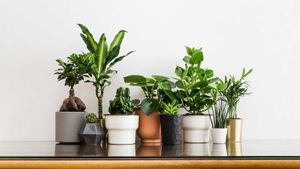As people grow more conscious of the effects their actions have on the environment, sustainable home design is rising in popularity. Sustainable interior design involves using materials and carrying out production procedures that are both socially and environmentally responsible. Here are the benefits of adopting a more sustainable approach to home décor
1. Environmental impact reduction
Sustainable interior design is crucial because it lessens its negative effects on the environment. Materials that are neither renewable nor recyclable, such as plastic and synthetic fabrics, are frequently used in traditional home decor. These substances contribute to environmental contamination and can take hundreds of years to disintegrate. Contrarily, the sustainable home decor makes use of recyclable and renewable materials like bamboo and organic cotton. This lessens waste and aids in resource preservation.
2. Health advantages
Sustainable interior design can also be good for your health. The indoor air quality is often poor since many traditional home decor items contain dangerous substances that can be released into the air. Organic cotton and wool are examples of sustainable home decor materials since they are produced without the use of pesticides and other dangerous chemicals, making them safer for the environment and for humans.

3. Promoting moral manufacturing methods
Using goods made in an ethical and socially responsible manner is part of sustainable home décor. Traditional home decor items are frequently made in factories that don't offer secure working conditions or decent pay. On the other hand, environmentally-friendly home decor is frequently created by businesses that value moral manufacturing procedures and treat their employees fairly.
4. Saving cash
Long-term financial savings can also come from using sustainable home furnishings. Even though they may initially cost more, sustainable items frequently have superior quality and are built to endure longer than conventional ones. As a result, you won't need to replace them as frequently, which will ultimately save you money.
5. Fostering originality
Sustainable interior design can foster creativity. You can create distinctive and fashionable home decor that represents your personal taste by utilising elements that aren't frequently used in traditional home design, including reclaimed wood or reused furniture.
As more individuals become ecologically aware and try to lessen their influence on the environment, sustainable home design is becoming increasingly popular. Sustainable interior design not only reduces your carbon footprint but also improves the quality of life for everyone who lives there.
These are seven eco-friendly decorating concepts you may use in your home
1. Use organic materials
Another excellent technique to increase the sustainability of your home design is to use natural materials. When choosing materials for furniture, flooring, and decorative objects, consider bamboo, cork, and salvaged wood. These resources are eco-friendly and renewable, and give your home a cosy, natural atmosphere.
2. Recycle and upcycle
Upcycling and repurposing used objects is one of the most environmentally-friendly methods to beautify your house. Give old furniture a second chance by painting, reupholstering, or turning it into something new rather than throwing it away. Old ladders can be converted into bookshelves, and old doors can be made into headboards, for instance.
3. Incorporate Plants
In addition to giving your home a burst of colour and life, plants have several positive health effects. They enhance general well-being, clean the air, and lower stress levels. Pick low-maintenance plants like succulents and spider plants or make a statement by building a vertical garden on a wall.
4. Choose energy-saving lights
Although lighting is a crucial component of house design, it can also be a substantial energy consumer. Use energy-efficient lighting, such as LED lights, which consume less energy and last longer than conventional bulbs. Dimming switches can be installed as well to regulate lighting and save energy.
5. Choose eco-friendly textiles
Use ecological materials for your interior design, such as organic cotton, linen, and hemp. These resources can be renewed and grown without the use of hazardous chemicals or pesticides. Fabrics created from recycled resources, such as plastic bottles or used garments, are another option.
6. Thrift!
Not only is buying used more environmentally friendly, but it can also be more cost-effective. To find one-of-a-kind decor pieces like antique mirrors, works of art, and decorative accents, visit thrift stores, flea markets, and consignment stores. You'll not only lessen waste but also help out neighbourhood businesses and nonprofits.
7. Use toxic-free paints and coatings
Hazardous chemicals in paints, coatings and aerosols can have a severe effect on indoor air quality. To reduce your exposure to dangerous chemicals, choose non-toxic solutions like zero-VOC or low-VOC paints and finishes. While they release fewer toxins into the air, these choices are also better for the environment.
E-friendly interior design not only benefits the environment but also makes a home cosier and healthier. Reduce your carbon footprint and make your home fashionable and environmentally friendly by incorporating these seven eco-friendly decorating ideas.
If you’re looking to adopt a more sustainable lifestyle, these brands can help you get started!


_1681364035079_thumb_1200.png?w=3840&q=75)

